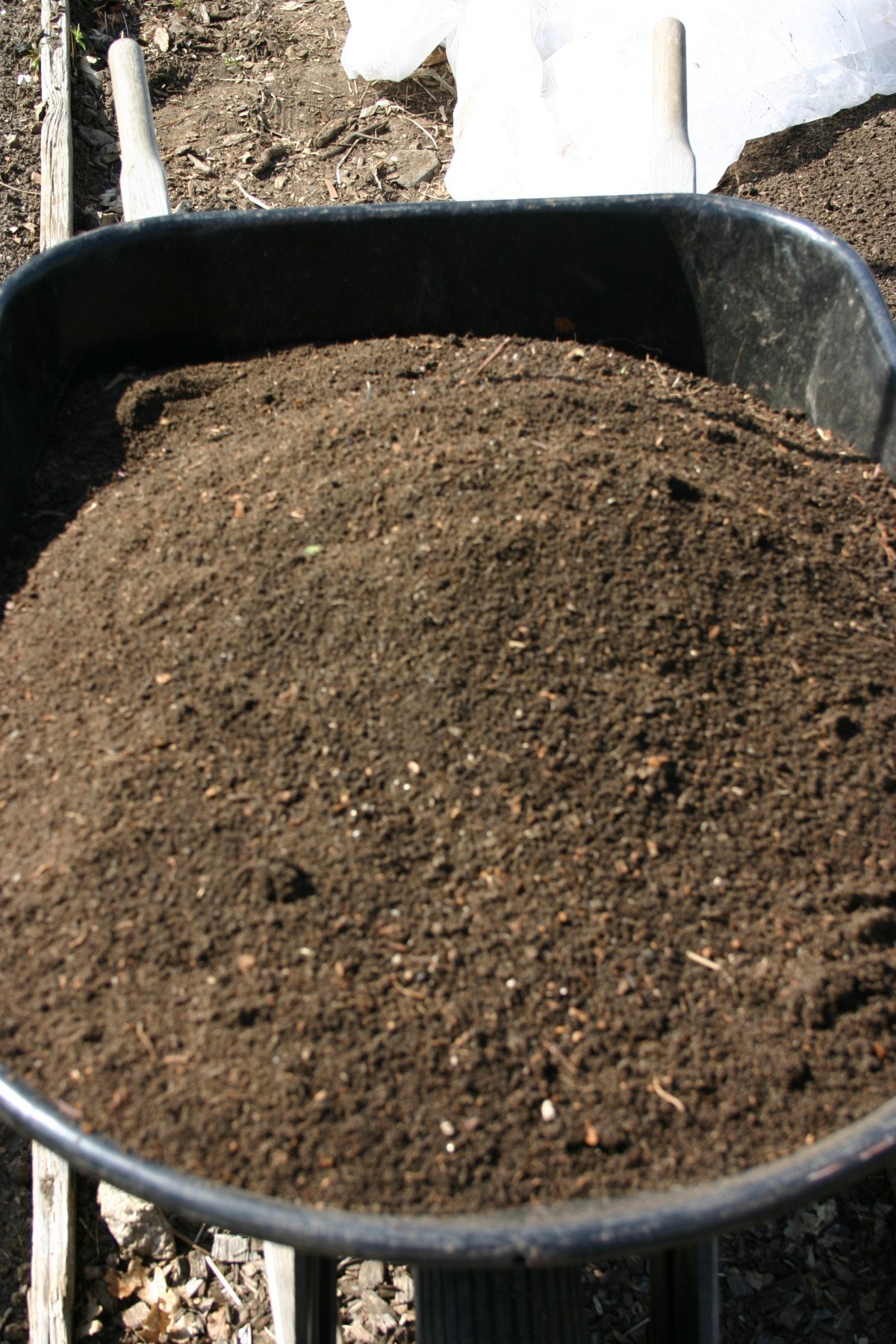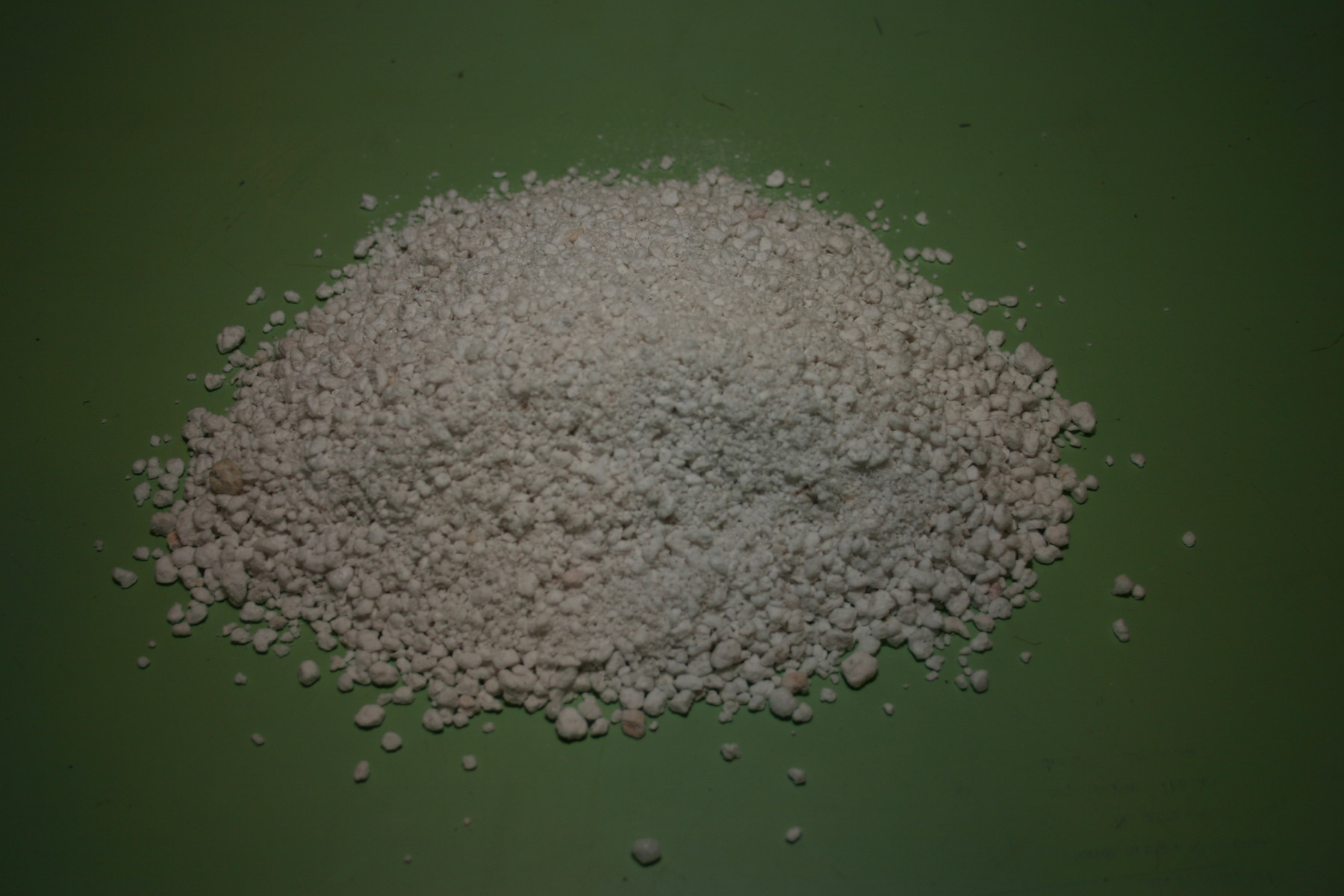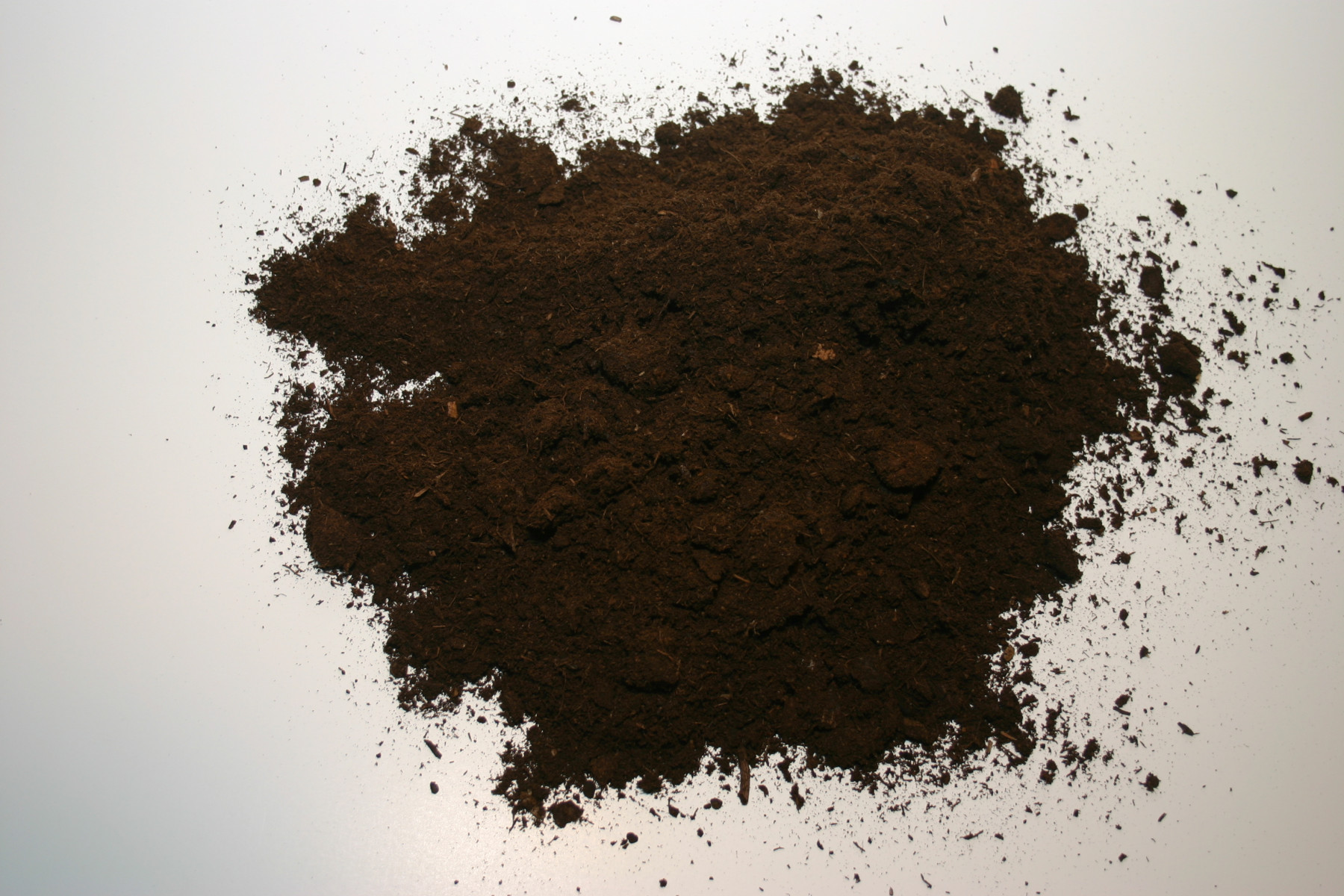
Along with seeds and plants, potting soil has traditionally been one the most expensive items in my gardening budget. I often used several large bales of Pro-Mix BX every year until I finally decided to make my own planting medium. It isn’t difficult to do.
The first step is to decide what ingredients you’ll include and in what proportions. which involves considering what you want to grow. Even the potting mix that’s best for starting seeds can be different from what’s ideal for transplanting the seedlings into. Nevertheless, there’s a list of ingredients from which most growing mediums are made. These include garden soil, peat moss, finely shredded coir or ground-up wood, sand, perlite, vermiculite, compost, leaf mold, and/or manure.
Garden soil
Garden soil is a key component in any potting mix. It should always be screened to remove any stones and other debris, and it should also be sterilized to eliminate seeds, pathogens, and insect eggs. Because buying pre-sterilized loam can be expensive, sterilizing it yourself saves money. This is done by heating the soil. Unfortunately, cooking it in your kitchen oven can stink up the house. An old outdoor grill is an alternative method. Heat the soil to 180°F for 30 minutes. Soil can also be sterilized by using steam or solar exposure. Details about all these methods are readily available online.
Water retainers
Peat moss. Peat moss has an impressive ability to retain many times its weight in water, which is then gradually released to plant roots, including the nutrients dissolved in the water. This makes peat moss an excellent soil additive, often recommended in a ratio of 2 parts soil to 1 part peat moss. However, Because peatlands are such a vast carbon sink on our planet, digging them up to harvest the peat moss causes large amounts of carbon to combine with oxygen and be released into the atmosphere as carbon dioxide, which contributes to global warming. Unfortunately, peat bogs develop so slowly that it can take a very long time for one that has been commercially exploited to return to its previous state.

Alternatives to peat moss. For these reasons, some gardeners now eschew peat moss for other water-retaining alternatives. Shredded coir (coconut fiber) is increasingly popular, or sometimes finely ground wood is used. Coir is slightly alkaline, so it works well with the many plants that favor a more pH-neutral environment than peat moss creates. Because peat moss is acidic, it usually needs to be neutralized with lime unless the plants being grown are acid-loving ones. The pH of ground-up wood varies with the species, although often it is close to neutral.
Aerators and drainage enhancers
Sand. Sand adds air spaces to a potting medium and therefore improves drainage. You can tell when your potting medium will benefit from adding sand if water fails to run through a pot of it quickly, say, in a minute or two. How much sand to add depends upon the drainage requirements of the plants you plan to grow. For many plants, a good soil-to-sand ratio to start with is 4 or 5 to 1. Because sand is added to enhance drainage, coarse sand works best. Sand sold for kids’ sandboxes is often too fine. Also avoid using beach sand because its high salt content can be harmful to plants. Suitably coarse construction sand is available in hardware stores, but be careful that it doesn’t contain unwanted chemicals. Although more expensive, the most preferable option is sand that’s specifically sold for horticultural use.

Perlite. Perlite, in its natural form, is a hard, dark, volcanic ore, but gardeners know it as the small, white, Styrofoam-looking nuggets found in potting mixes. perlite in the natural state is transformed into garden perlite by heating the ore to a temperature of about 1,600°F. This high heat explosively expands the ore into the lightweight material we know. Perlite in this processed form retains its shape even when pressed, so small bits of it are excellent at creating tiny pockets of air around plant roots, helping to provide the oxygen that the roots need for growth. Horticultural perlite, being porous, also absorbs water, helping to retain the moisture while at the same time draining away excessive amounts of water that would otherwise drown roots. Perlite in the processed form can be dusty, however. So wearing a mask when handling it is recommended, as is wetting it before adding it to a potting mix.
Vermiculite. Vermiculite is another naturally occurring mineral that transforms into a lightweight, porous substance when heated. This substance is further processed into brownish-colored granules of various size, from very coarse to very fine. Like perlite, vermiculite is nontoxic, doesn’t decompose, and has a neutral pH, but the two are not identical for gardening use. While both help to enhance soil aeration and drainage, the less compressible perlite excels at forming tiny air pockets that aid root growth, and it tends to shed water more readily than vermiculite. However, because vermiculate retains more water than perlite, it can be the better product for helping prevent seeds or plants from drying out. When purchasing vermiculite, look for the horticultural variety in garden centers.
Nutrient additives

Compost. None of the potting mix ingredients mentioned so far are good sources of nutrients. In lieu of the time-released fertilizer that commercial makers of potting mediums frequently add, compost can be a good home-produced alternative that is inexpensive. I make it by shredding lawn clippings, wood chips, dead plants, and other vegetable matter to form a large compost pile. The heat produced as the materials decompose tends to kill unwanted seeds and insect eggs. The temperature reaches a peak initially (about 160°F) and then gradually declines as the compost is repeatedly turned. Compost is ready to use when it looks, smells, and feels like rich, dark brown soil. Before adding my compost to a potting mix, I screen it.
Leaf mold. For gardeners who have deciduous trees, the leaves that fall annually can be turned into a very useful, nutrient-rich additive for potting mixes. Simply by piling the leaves in a bin and leaving them for a couple years, they will eventually break down, starting at the pile’s base. The decomposition process can be hastened by shredding the leaves initially.
Manure. Very well-rotted manure, especially horse manure, can also be included in a potting mix as a good source of nitrogen. In many areas, fresh horse manure is readily available from local stables. Fresh manure, however, needs to be composted until it is suitably aged. Among other benefits, the composting process will kill off unwanted seeds and pathogens.


